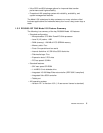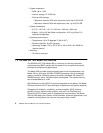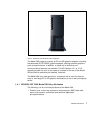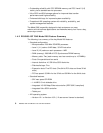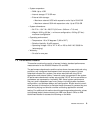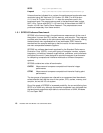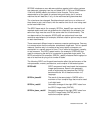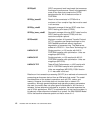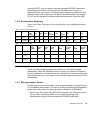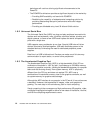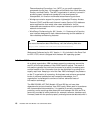
RS/6000 Introduction 13
Although ROLTP may be used to compare estimated RS/6000 commercial
processing performance, actual system performance may vary and is
dependent upon many factors including system hardware configuration, and
software design and configuration. All performance estimates are provided
"AS IS" and no warranties or guarantees are expressed or implied by IBM.
1.5.2 Performance Summary
Table 1 and Table 2 provide, at time of publication, the related performance
values.
Table 1. SPEC and LINPACK Performance.
Table 2. Multiuser Performance
1.6 Industry Trends and Directions
There are many emerging trends and directions in the UNIX hardware
marketplace. Some will be determined as frivolous, and others will become
industry standards. In this section there is a discussion of some key emerging
technologies that may, in the opinion of the authors, become pervasive in the
marketplace.
1.6.1 Microprocessor Future
As applications grow more complex, more processor power is required to give
you acceptable performance. It is easy to predict the following developments
pertaining to the growth of computing power available for the RS/6000.
• Moore’s law will remain true. 1000 MHz processors are already running in
the lab. More importantly, IBM’s use of copper technology and
complementary metal oxide semiconductor (CMOS) fabrication
Model CPU Clock
Rate
(MHz)
L1
(KB)
L2
(MB)
SPEC
int95
SPEC
int_
base95
SPEC
fp95
SPEC
fp_
base95
LINPACK
DP
LINPACK
SP
LINPACK
TPP
150 604e 375 32/32 1 15.1 14.5 10.1 9.85 64.8 151.2 255.7
260 POWER3 200 32/64 4 13.2 12.5 30.1 27.6 236.5 248.1 630.0
Model CPU Clock
Rate
(MHz)
L1
Cache
(KB)
L2
Cache
(MB)
Relative
OLTP
Perf.
SPEC
int_
rate95
SPEC
int_base
rate95
SPEC
fp_
rate95
SPEC
fp_base
rate95
150604e37532/3216.0----
260 POWER3
(1-way)
200 32/64 4 10.5 116 111 266 243
260 POWER3
(2-way)
200 32/64 4 21.0 232 222 509 468



